Bath is the only city in the UK to be a designated UNESCO World Heritage Site in its entirety, but there are other places on the World Heritage List that make for great day trips from the city.
City of Bath: UNESCO World Heritage Site
Bath has been recognised by UNESCO since 1987, when the city was listed as a cultural site with outstanding universal value and cultural significance, due to its Roman remains at The Roman Baths and hot springs (which you can drink from at The Pump Room, or bathe in at The Gainsborough). The inscription was also due to its eighteenth-century architecture, eighteenth-century town planning, social setting and landscape setting. Bath has over 5,000 listed buildings, the most famous examples being the Royal Crescent and The Circus.
In 2021, Bath received an exceptional second UNESCO listing as part of the Great Spa Towns of Europe. You can learn more about what makes the city so special at the Bath World Heritage Centre.
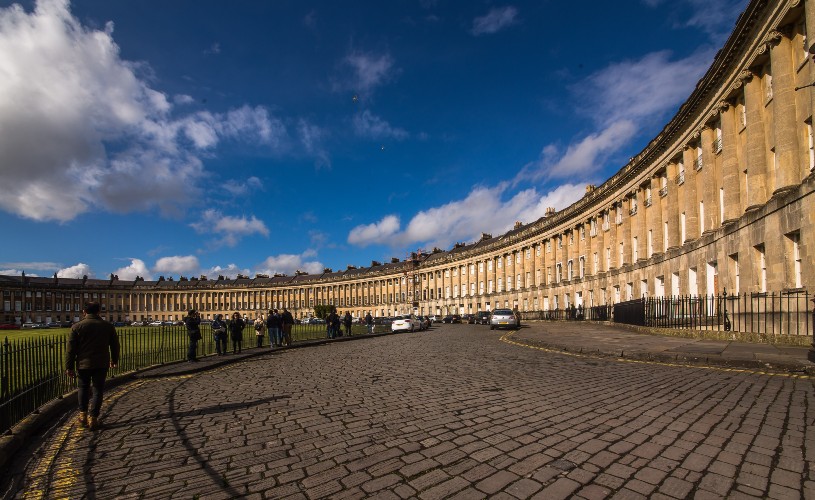
Image: The Royal Crescent, Bath
Stonehenge
One of the most famous wonders of the world, Stonehenge is a 5,000 year old monument, including barrows, burial sites and the neolithic stone circle which was built around 2,500 BC (around the same time as the Great Pyramid in Egypt) and is over 4,500 years old. It is the site of one of the largest cremations cemeteries known in Neolithic Britain, and is the only surviving lintelled stone circle in the world.
Stonehenge has had pagan and spiritual significance for centuries, and even now thousands gather to celebrate the summer and winter solstice, and spring and autumn equinox every year.
How to get there from Bath
Bookable excursions are available with In & Beyond Bath, Bath Insider Tours, Galahad Tours, Mad Max Tours and Rabbie's Tours. You can also book a private tour with Sulis Guides or Fred Mawer Tours.
By train: Direct trains from Bath to Salisbury take around an hour - see GWR.com for more info.
By bus: From Salisbury there is a dedicated year-round bus service to Stonehenge (you can buy tickets that include bus travel and entrance fee). The bus also passes the Iron Age hill fort at Old Sarum and Salisbury is well worth exploring, particularly the Cathedral and its copy of the Magna Carta. Stonehenge buses leave from Salisbury train station on the hour from 10am-4pm (more frequently in summer), it takes about 45 minutes to get to Stonehenge.
By car: One hour and 15 minutes from Bath. Somerset Tours & Transfers offer flexible private transport.
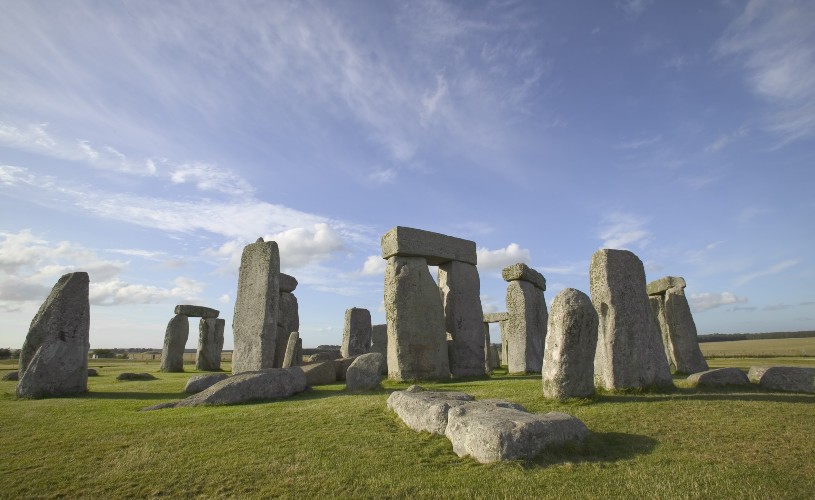
Image: Stonehenge
Avebury
The world's largest megalithic stone circle, Avebury was built over 4,600 years ago and is still being excavated, revealing more details about the Neolithic and Bronze Age with every passing year. The site forms part of an incredible landscape of ancient ceremonial sites which include West Kennet Avenue, West Kennet Long Barrow, The Sanctuary, Windmill Hill and the mystical Silbury Hill (Europe's tallest prehistoric burial ground) - many of which can be reached on foot from the village of Avebury.
The historic Avebury Manor is currently closed for restoration work, but you can still visit the stone circles (guided tours are also available), Alexander Keiller Museum (where you can see treasures from across the site), 17th century thatched threshing barn and 16th century dovecote.
How to get there from Bath
Bookable excursions are available with Bath Insider Tours and Mad Max Tours. You can also book a private tour with Sulis Guides or Fred Mawer Tours.
By car: Just over an hour away from Bath, via the M4 motorway.
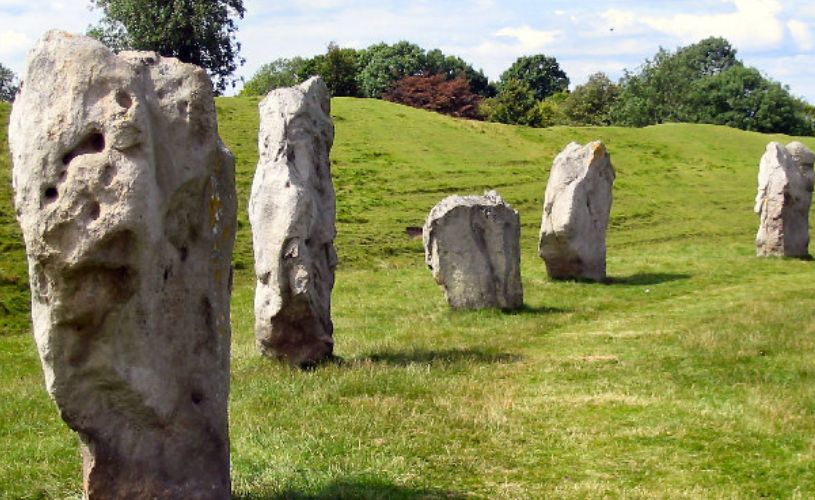
Image: Avebury
Blaenavon Industrial Landscape
Blaenavon Industrial Landscape was inscribed as a World Heritage Site by UNESCO in 2000 for its role in South Wales as the world's major producer of iron and coal in the 19th century, helping to birth the Industrial Revolution.
The main attractions include Big Pit National Coal Museum, Blaenavon Ironworks, the World Heritage Centre and Blaenavon Heritage Railway, which are all just a few minutes’ drive or walk from each other. There are also numerous trail routes you can take around the area, taking in the historic sights of Blaenavon Heritage Town, or various nature, landscape and history hikes around the surrounding hills.
Blaenavon is also at the gateway to the South Wales Valleys and is partly within the Bannau Brycheiniog (Brecon Beacons) National Park, so why not extend your trip by exploring further into this beautiful area of Welsh countryside?
How to get there from Bath
By train: Catch the GWR service to Cardiff Central and alight at Newport (40 minutes). Walk to the Market Square (6 minutes) and catch the X24 Gold to Blaenavon, alighting at Curwood (1 hour).
By car: One hour and 20 minutes from Bath.
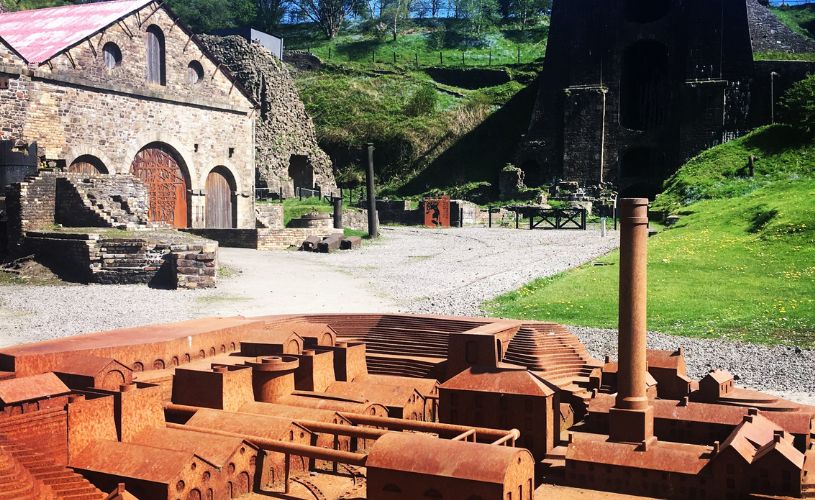
Image: Blaenavon, credit Coralie Acheson
Blenheim Palace
This grand historic house and masterpiece of Baroque architecture was built between 1705 and 1722, and has been open to the public for 75 years. Best known as the birth place of former British Prime Minister Sir Winston Churchill, this 18th century palace and estate was presented by the English nation to John Churchill, first Duke of Marlborough, in recognition of his victory in 1704 over French and Bavarian troops.
Blenheim Palace was designed by John Vanbrugh and Nicholas Hawksmoor, and the grand landscaped park by Lancelot ‘Capability’ Brown, considered to be a ‘naturalistic Versailles’. Inside the palace you can explore the gilded State Rooms, numerous exhibitions, priceless collection and take various themed tours around the rooms. Take in the splendid gardens on numerous trails, buggy tours or a miniature train ride, or try to find your way out of the two-mile hedge maze.
How to get there from Bath
Bookable excursions are available with Galahad Tours.
By train: Take the GWR service to Oxford (70 minutes), then hop on a direct S3 Gold bus from the station to Woodstock (40 minutes).
By car: One hour and 50 minutes from Bath.
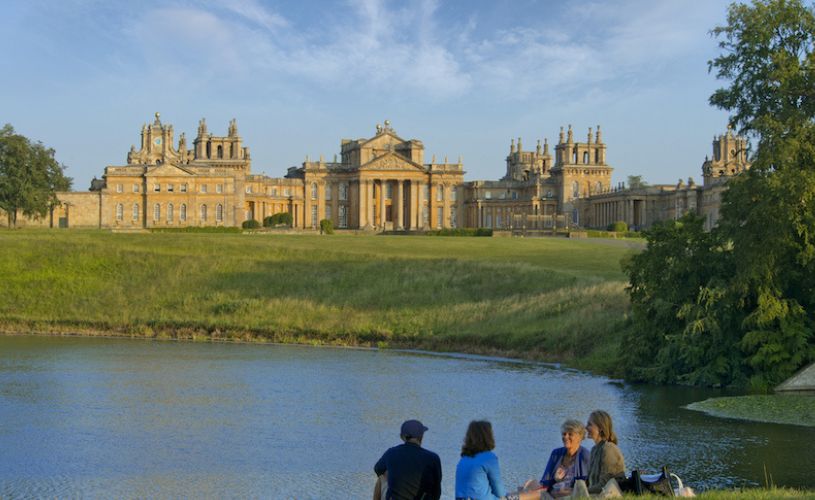
Image: Blenheim Palace
The Jurassic Coast
Spanning 95 miles of beautiful Dorset and Devon coastline between Studland Bay and Exmouth, the Jurassic Coast is the first ever site to be inscribed as a 'natural' World Heritage Site. A popular site for fossil hunting, the rocks and fossils found along the Dorset stretch of the Jurassic Coast are from the Jurassic and Cretaceous time periods, and the Jurassic Coast as a whole granted UNESCO status for its outstanding geology, revealing 185 million years of Earth's history.
The South West Coast Path walking trail runs along the length of the Jurassic Coast if you're up for a scenic hike, or cycling routes are also dotted along the coast, most of which are off-road. In addition to stunning coastline, fossils and beaches, you'll find unspoilt countryside, quaint English seaside towns, popular family attractions and ancient castles in the area.
How to get there from Bath
By train: Take the train to Weymouth (2 hours) and then use the X54 Jurassic Coaster to explore locations along the coast.
By car: Dorset is a roughly two hour drive from Bath via the A36.
Read more:
Related
Comments
Comments are disabled for this post.





